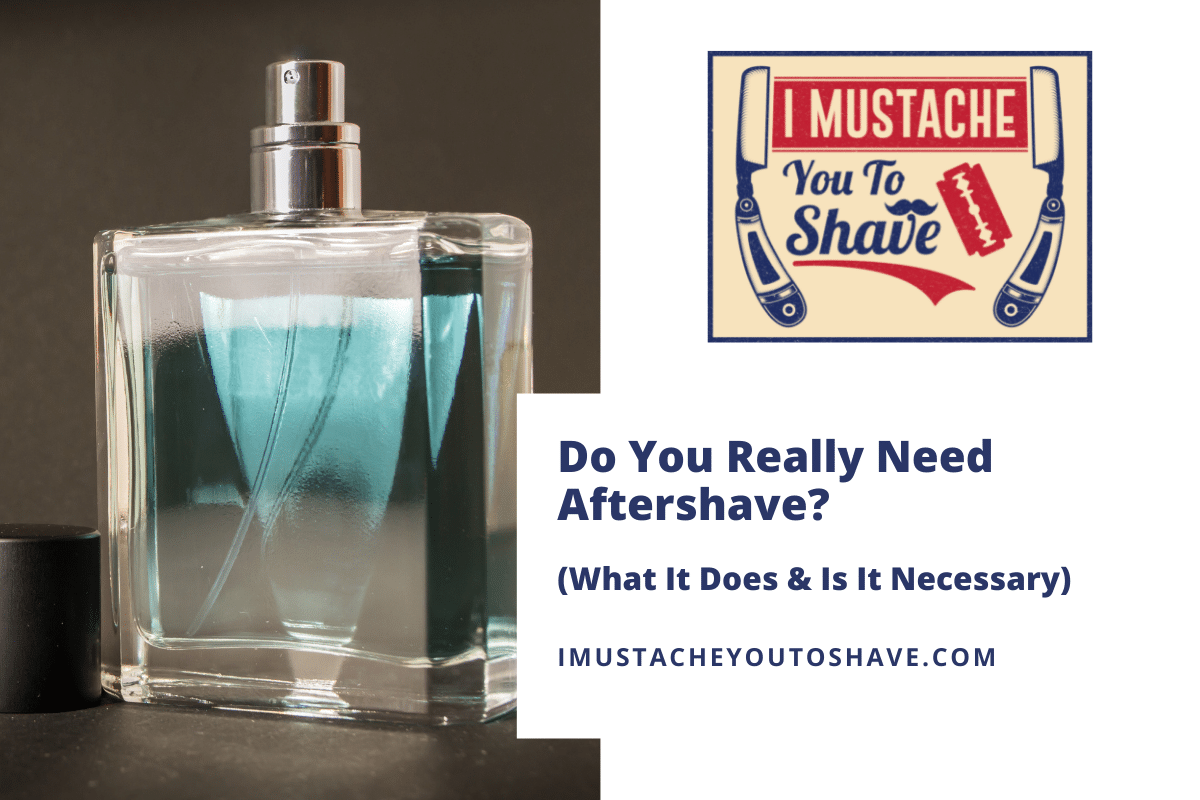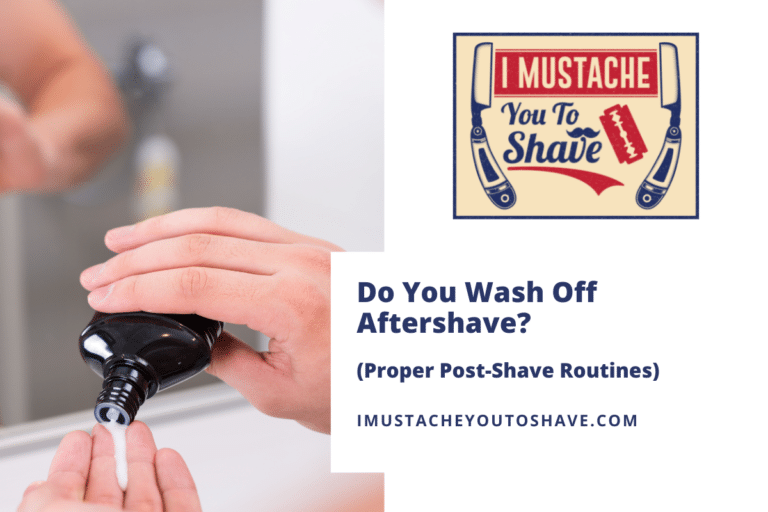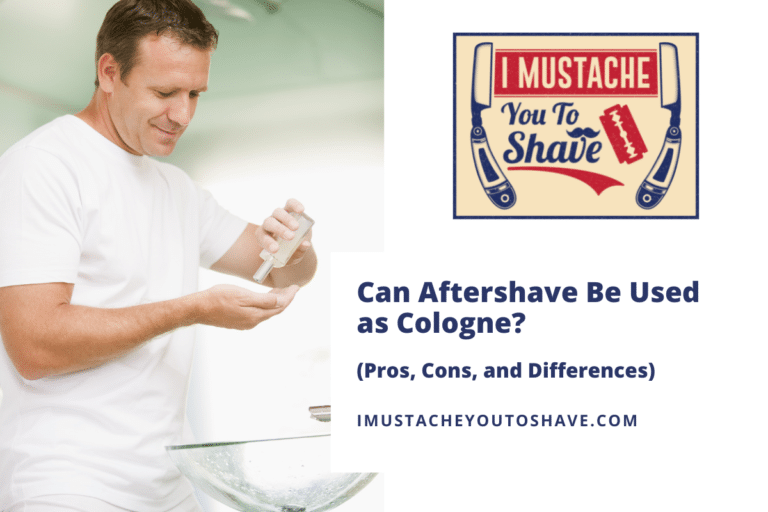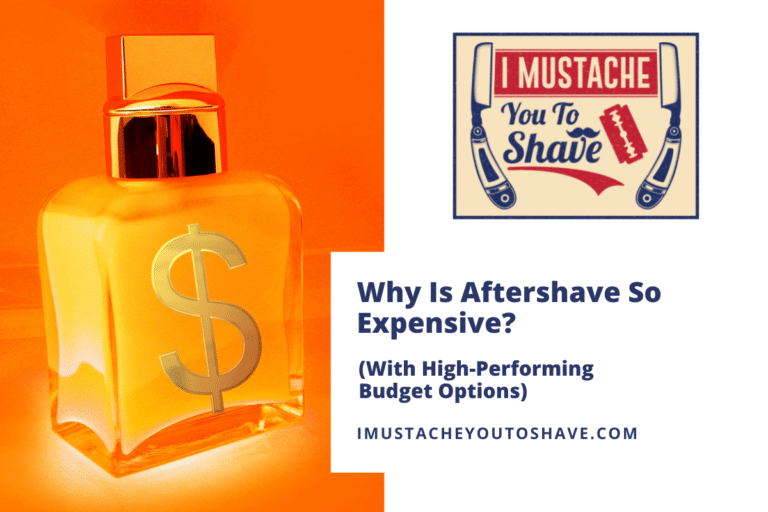Do You Really Need Aftershave? (What It Does & Is It Necessary)
Depending on how you learned to shave, you may or may not be accustomed to using an aftershave. Should you be using it?
Aftershave is not a necessary part of your shave, but using a post-shave treatment such as a balm, moisturizer, or toner will provide specific skin benefits. A good aftershave will tighten skin, erase blemishes, and prevent painful infections. Conditions such as ingrown hair, acne, and dry skin can be remedied with the right choice of product.
Read on to learn which post-shave treatment may be best for you.
What is the point of aftershave?
If you’ve ever had to shave without a decent shaving cream or soap or experienced the discomfort of shaving with a dull razor, you’re aware that shaving can be traumatic for your skin. Even an ideal shave is still running a blade over your face and stripping away the hair and a bit of skin.
Aftershave – no matter the form it takes – is intended to cool and sanitize your skin. A good aftershave will also include astringent and moisturizing ingredients that will help improve the feel and appearance of your freshly shaved face.
History of aftershave
Shaving is an extremely old practice that has waxed and waned in popularity throughout millennia. As you can imagine, some of the early techniques and tools could be quite unforgiving.
As the popularity of shaving increased, such as in the case of ancient Rome, barbers were responsible for hair removal. Barbers who could shave with the greatest comfort and/or provide relief were regarded very highly and some became personal groomers to the wealthy and powerful.
It became beneficial to the barbers to satisfy their customers else they could face violent ends. Roman barbers would use olive oil, vinegar, herbs, and even spiderwebs to soothe their clients’ faces after shaving. These concoctions not only soothed but provided some antiseptic protection.
A reputable barber provided a close comfortable shave while an incompetent barber left their clients with razor burn and stinging cuts. You can imagine the hygiene practices of the 1700-1900s and venture to guess that infections were common.
Around 1772, Jean-Jacques Perret painstakingly compiled the best information on barbering available into a book The Art of Learning to Shave Oneself. Perret emphasized the use of shave cologne for aesthetic reasons but given the high alcohol content, the antiseptic qualities of the treatment were noticed.
What does aftershave do?
Aftershave is both a restorative treatment and can also serve cosmetic purposes.
A good aftershave treats painful conditions such as razor burn, inflammation, nicks, and cuts. It should also prevent dry skin and not cause allergic reactions. It should also tighten skin and close pores.
Do you remember falling and scraping a knee when you were a child? Did someone ever respond by applying something like mercurochrome, Bactine, peroxide, or ointment? Aftershave works under the same principle.
When you scrape a sharp piece of steel across your face, damage inevitably occurs. Despite countless advancements in shaving technology skin is inevitably damaged when shaved. Trauma could result in microscopic cuts, nicks, tugging of hair follicles, and sometimes allergic reactions.
Aftershave treatments are designed to alleviate these painful grooming woes.
Does aftershave burn?
Macaulay Culkin made his pop culture mark immediately after applying aftershave to his face.
Heavily concentrated alcohol can, of course, cause a burning sensation to open cuts. Alum bars can have a stinging sensation too due to their natural astringent and antiseptic properties.
Those with sensitive skin may experience a far more dramatic reaction to certain compounds or fragrances. If the burning or stinging sensation lasts more than a few moments it may be a reaction and should be taken seriously.
Is aftershave necessary?
Having a couple of aftershave options in your arsenal can help you from drying out your skin and provide you with helpful treatments for days that you need a little extra help.
A post-shave treatment is not required but IS beneficial. No matter your skin type or application there is an aftershave out there that can help give you a better shaving experience. Whether it be cooling razor burn, rehydrating skin, or preventing infection, having a number of products to treat various possible conditions is advised.
Over time, most men discover how to shave with minimal discomfort but there are the occasional variables that occur. Imagine having naturally oily skin until being prescribed a medication that dries the skin out. You might have to make a temporary switch to something more hydrating than your normal go-to.
The most beneficial attribute to any good aftershave is its ability to prevent infection either by killing off potential bacteria or removing conditions in which they thrive.
What kind of aftershave should you use?
Those with sensitive skin have learned to be a bit more discerning about how to treat their face and the practice is worth the effort.
Most men have a post-shave preference. Some prefer the bite of alcohol and the familiar scent of their favorite splash while others are constantly seeking to find the new best thing for their skin. Matching the treatment to your individual needs will drastically increase your shaving experience.
Those with oily skin may cut that with an alcohol formula while those with dry skin will prefer something more hydrating. Those who suffer from acne may need more of an astringent.
Identifying your individual needs is the first step.
For nicks and cuts, spot treatment of alum or a styptic pencil may be used to stop the bleeding.
The types of post-shave treatments available are:
- Aftershave splash
- Aftershave balms/gel
- Aftershave lotion
Really begin to study your skin type and then consider the following post-shave treatment options.
Aftershave splash
The most common form of aftershave, as most know it, is called splash.
Splash has a high concentration of alcohol and fragrance. The alcohol serves as an antiseptic to help prevent potential infection.
Ideal skin type
Aftershave splashes are best suited for those with normal to oily skin.
Typical ingredients
Splashes are predominantly comprised of alcohol, but they may also contain aloe or other moisturizing ingredients and fragrances.
Overall performance
Splash is the go-to for most men.
It provides great antiseptic qualities and is often heavy with some form of fragrance. Some even look forward to the sting of slapping it on as a means to start the day.
An alcohol-heavy aftershave splash may not be suited for those who shave daily as the alcohol can bite the skin. Careful consideration should be paid to the perfumes often used as they may cause more irritation than the alcohol.
Our Recommendation (with alcohol)
Aqua Velva Ice Blue has been around since 1917 and is still available almost anywhere that sells razors. It carries the benefit of alcohol as an antiseptic as well as menthol to give the skin an additional cooling sensation.
Our recommendation (without alcohol)
Badger Aftershave Oil does not contain alcohol often falls into the categories of tonic, toner, balms, and gels. Badger, on the other hand, is an oil and great for dry skin. The natural oils help rehydrate and are gentle on sensitive skin.
Aftershave balm
Aftershave balm, or even gel, are compounds made of moisturizers, oils, and/or creams dedicated to treating a number of post-shave conditions.
Ideal skin type
Aftershave balm is suitable for all skin types but especially those with sensitive or dry skin.
Typical ingredients
Aftershave balms are comprised primarily of water, glycerin, oils, fragrance.
Overall performance
All skin types will benefit from a balm or gel.
Special attention should be paid to the ingredients as synthetic fragrances can cause more longer-lasting irritation than alcohol.
Those with oily skin or those that suffer from acne may want to go over their skin with astringent before the application of a balm.
Our recommendation
Nivea Men Replenishing Post Shave Balm is a moisturizing balm that calms discomfort after shaving. It helps protect against irritation and makes skin look healthy and smooth by helping keep skin from drying out.
Aftershave lotion
Aftershave lotion tends to have a lower concentration of alcohol as compared to an aftershave splash. It has a lower likelihood to dry skin.
Aftershave lotion is also liquid, unlike balms and gels which tend to be creamier in composition.
Ideal skin type
Normal or oily skin types will do well when using an aftershave lotion.
Typical ingredients
Aftershave lotions usually contain alcohol and fragrance, as well as glycerin.
Overall performance
Aftershave splash often contains between 70-90% alcohol while aftershave lotion contains between 15-20%.
Lotions will not bite as hard as stronger products but will still provide some protection from bacteria and help to close up some minor cuts.
Our recommendation
Proraso Aftershave Lotion is made from natural ingredients and with a lower alcohol content it is suitable for more frequent use on normal skin than that of a splash. It also contains witch hazel to help minimize pores and dark spots.
How to use aftershave
Read the label before using any product.
Always consult the directions associated with whichever product is being used especially when applying it to broken skin. Balms made be applied as a moisturizer while splashes and lotion are slapped gently against recently shaved surfaces
To reduce the burning associated with alcohol-based splashes, you can apply the splash to a soft damp cloth and blot the skin. This should cut down on the burn.
Most aftershave treatments may be allowed to dry on the skin. Alum is usually rinsed.
What can you use instead of aftershave?
A barber’s correspondence course from 1905 encourages the use of witch hazel to satisfy and soothe clients’ skin.
Witch hazel and alum blocks are popular alternatives to aftershaves that still provide natural astringent and antiseptic benefits. Oils are also popular but may clog pores or offer no nourishing benefit.
Witch hazel toners are typically alcohol-free and not as drying as alcohol-based aftershaves. Witch hazel is a natural antiseptic and astringent that will protect the skin while shrinking pores and help remove dark spots.
Alum is also a popular alternative to aftershave. It comes in the form of a crystalline block used to stop bleeding, reduce acne and reduce inflammation. A light stinging sensation may present especially if applied to cuts. The sting dissipates quickly once rinsed off.
Can you use moisturizer instead of aftershave?
In an emergency, a facial moisturizer can rehydrate skin dried out from shaving.
Moisturizers in most cases are not antiseptic and are not designed to fully address post-shave facial needs. A gentle and nourishing shave balm will be much more beneficial.
Do not use a body lotion in place of an aftershave or facial moisturizer as it is thicker and can clog pores and trigger breakouts or other irritation.








